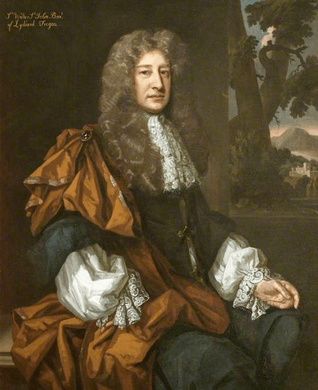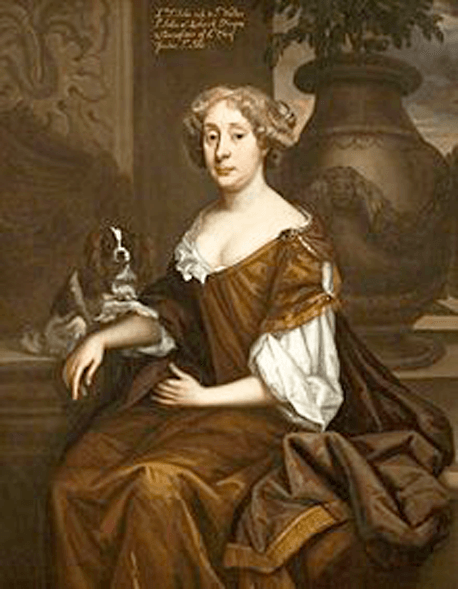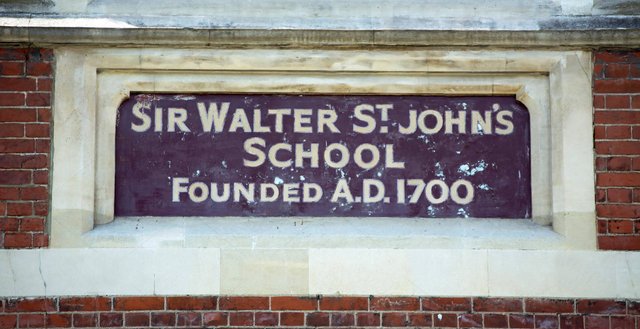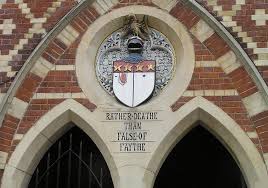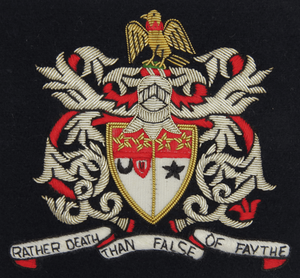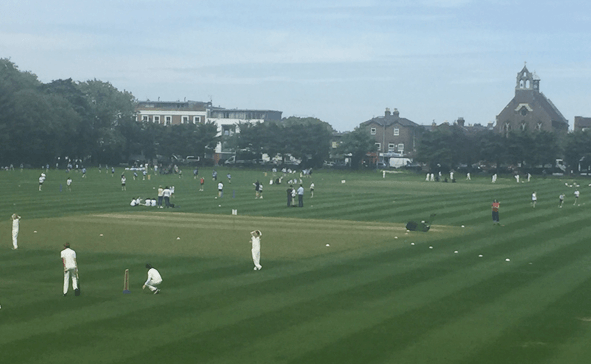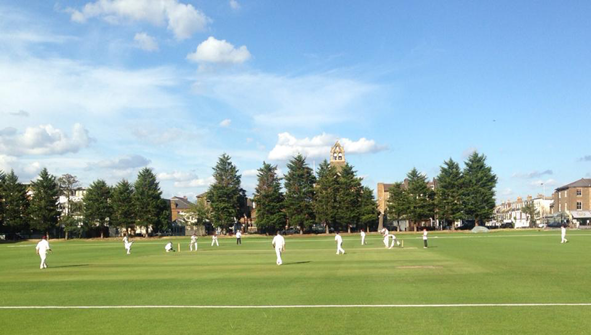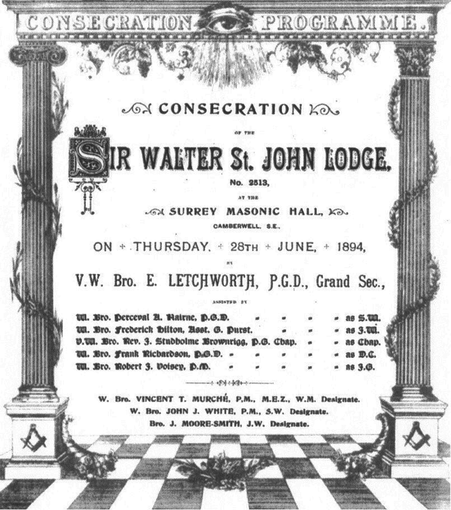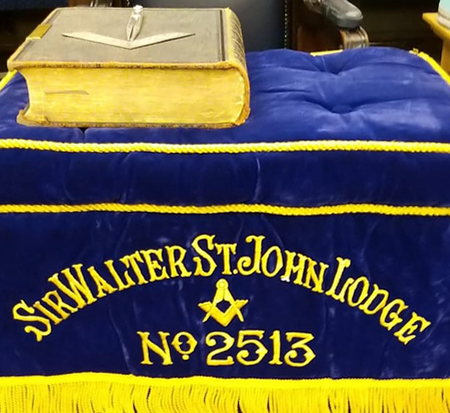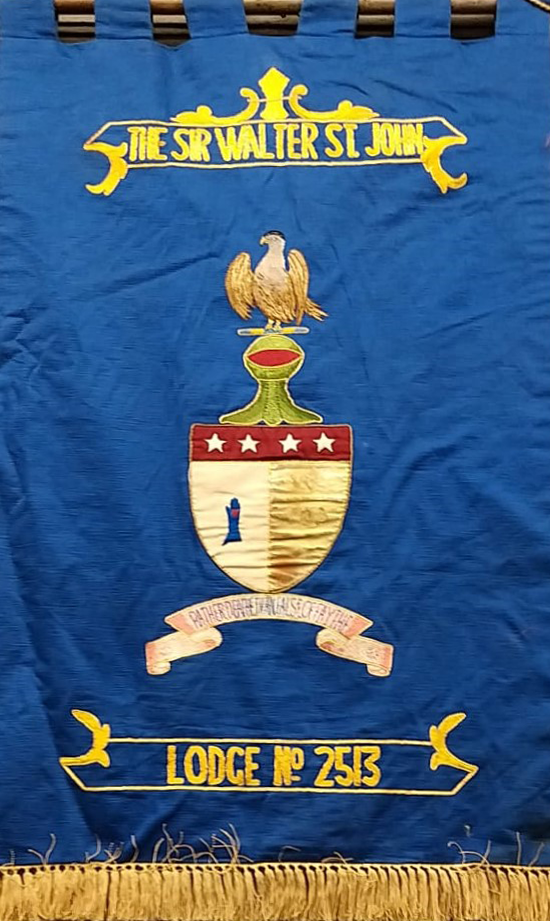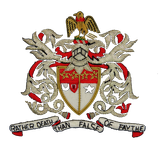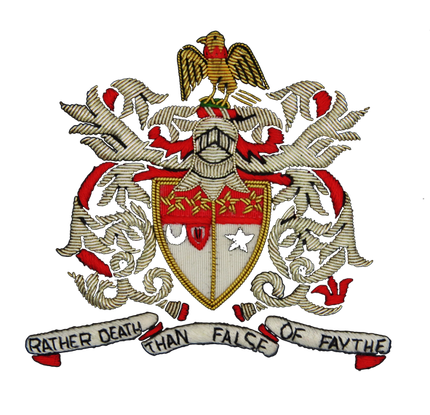
Sir Walter St. John - 2513
Consecrated in 1894 by former students of St Johns Training College Battersea, we are a London Metropolitan Lodge, under the jurisdiction of the United Grand Lodge of England. We are a friendly and welcoming group of Masons who enjoy all aspects of Freemasonry. We are fortunate to have members from across the country, although mainly from the London area.
PAST
The past is where we draw our tradition and ceremony from. A conjoined idea, a 'belief', in something bigger than oneself, a brotherhood, of like minded people across the expanse of time.
PRESENT
The present is where we take action on the reflections, we form of the past, in order to positively effect both the present condition of Freemasonry and the future of our 'Lodge'.
FUTURE
The Future is a place of endless possibility and infinite opportunity for both 'Lodge' and benefit of 'Freemasonry in General'. If we honour the past & 'work' hard in the present we can protect our future.
before the lodge
Sir Walter St John's Grammar School for Boys 1700 - 1986, Battersea High Street, Battersea, London, SW11 3JB, England
Early history
In September 1700, Sir Walter St John, 3rd Baronet (1622–1708), of Battersea and of Lydiard Tregoze, Wiltshire, signed a deed that established a charity to form a school to "teach twenty poor boys of said parish" (Battersea). This was the start of Sir Walter St John's School, which was to survive for 286 years. By 1750, 83 boys and 5 girls were given instruction at the school. Battersea at the start of the 18th century was a village of some 200 dwellings containing about 1500 inhabitants. The rapid expansion of the London area during that and the following centuries, meant that there was a need of education for many more boys. A document of 1800 shows that the operation was based on the rules laid down by the Society for Promoting Christian Knowledge, and much of the curriculum was centred on the Bible.
Operation in the first half of the 20th century
The school was organised by the start of the 20th century into six levels or forms. The Intermediate Degree Examination of the University of London being taken in the 6th form. To have competition in sports and to help tuition six houses were organised in 1910. An Army Cadet unit was also formed in 1910 which existed until 1969. An Air Training Corps Flight was started in 1941 and continued after the disbandment of the army cadets. The number of boys in the school grew from 320 in 1917 to 544 in 1928 and remained at approximately at this level until the start of the Second World War in 1939. During this war the school with about 320 boys was evacuated to Godalming in Surrey, where it shared classrooms with the Godalming County School and Charterhouse School, a public school.
Houses
The six houses in the school were named after honours granted to members of the St John family. A colour was associated with each house, and students were required to wear a cap with the school badge on the front and a small button in the colour of their house on the crown. The colours were also used in sportswear, shirts for soccer and a sash for Fives and boxing. Both were used in other sports.
· Beauchamp (Pronounced "Beecham") had blue as its colour.
Oliver St John was also Baron Beauchamp.
· Bletsoe used Brown. Bletsoe Manor was also owned by the
St John's family.
· Bolingbroke was the red house. Henry St John was made the first
Viscount Bolingbroke in 1712.
· Grandison had yellow as its identifier. Commemorating Oliver St John,
· Lydiard used the violet colour. Oliver St John was also created
Baron St John of Lydiard Tregoze
· Tregoze had the green for its use. See above in Lydiard
Prior to Sir Walter St John's Boys Grammar School being amalgamated with William Blake School, there were only three houses in the School, the names were as stated above but were actually together: Grandison Bletsoe (GB), Beauchamp Bolingbroke (BB) and Lydiard Tregoze (LT).
Post-war
After the return to Battersea, the school became Sir Walter St John's Grammar School. It was situated on Battersea High Street, next to the Thames, off the B305 and next to the Royal Academy of Dance. It had around 500 boys with a three-form entry. The school lay in the parish of St Mary's Church, Battersea. By the early 1970s falling birthrate and governmental pressure was causing the closure or amalgamation of many schools.
Comprehensive
Such an amalgamation was planned in 1978 with the lower school (classes 1 to 3) going with the William Blake School and the Upper School remaining in Battersea High Street. The combined school was designated the Sir Walter St John's Comprehensive School. There were about 500 students in the Upper School and 300 in the Lower.
Development Butterfield's entry arch in 2004
During the first 150 years the name Sir Walter St John was seldom used and the school was called the "Battersea School" or the "Battersea Charity School". By 1832 the school had grown to hold 90 boys and 30 girls. In 1853 the Charitable Trust Act was enacted and the school passed under the control of the Charity Commissioners. The girls were soon transferred to the nearby Mrs Champion's School. The number of boys had increased to over 200, so the school was split into an Upper School and a Lower School. A new building was constructed in 1859 on Battersea High Street designed by William Butterfield. The entry arch of this building still exists.
By 1860 the name "Sir Walter St John's School" was being used. The Elementary Education Act 1870 had the result of splitting off the Upper School to form the newly founded Battersea Grammar School and in 1880 the Elementary School (part of the Lower School) was closed. The next change occurred in 1902, when the school was re-organised as a Secondary School. Little is known of the early buildings before the William Butterfield wing was built. Enlargement occurred in 1898 when the old science block was built. The Great Hall together with the West Block was opened in 1915, while the modified library and laboratory block started operation in 1926. Temporary classrooms were assembled in 1918 but remained in use until the north extension became available in 1938. A Luftwaffe bomb destroyed the west wing in 1941 but it was rebuilt in 1952. The final change in the school's buildings happened in 1961, when the Science Block was replaced.
Closure
The school was finally closed in 1986, when the students were transferred to the new Battersea Park School. The buildings remained unused from 1988 to 1990 when they were purchased by Thomas's London Day School and once again boys and girls received education in Battersea High Street. The School had an uncommon status, operated by the local authority but legally a charity, which led to its being mentioned by name in several Education Acts, a highly unusual procedure. This meant that when it closed the assets of the school, principally property, did not revert to the Education Authority upon closure. Instead the Sir Walter St John's Educational Charity was formed in 1992 and continues to support disadvantaged children in the former London Boroughs of Battersea and Lambeth. An Old Boys Association continues, with a golf society, football and cricket clubs and a masonic lodge.
Sir Walter St. John Lodge 2513
A Short History of the Sir Walter St. John Lodge, Written by W. Bro. E.C.B. Doe, 1994 Updated by W. Bro J Stutchbury, SLGR,SLGCR
Origins of the Lodge
The Lodge had it's origins in an organization called the Battersea Club which was composed of former students from St. John's Training College, Battersea. This club had, for many years, enabled students to keeping touch with their contemporaries and to develop new friendships with those who had preceded or followed them at the College. The College was a Teacher Training College so it was not surprising, in the late 1800s, to find a number of Freemasons amongst its former students. Thus it was perhaps inevitable that some of these should from time to time discuss the possibility of extending the principles of friendship of the Battersea Club by adding a Masonic dimension and forming a Lodge from, and for, former students of St. John's Training College.
The Name of the Lodge
Following the decision to form the Lodge, the next step was to find a suitable name. St. John's might have appeared the obvious choice given the name of the College and it's Masonic significance but was rejected because of the number of Lodges already bearing that name. The next choice, Battersea, from the Club was also rejected as it was not felt to adequately reflect the concept of an ex-students Lodge. Eventually it was decided to adopt the name of the school where the College students carried out their teaching practice as it was felt that this would best identify the Lodge and its membership. That school was itself named after the person who had originally endowed it, one Sir Walter St. John. Hence the name of the Lodge not only reflects its origins but might also be said to reflect an individual who practiced the principles of charity and benevolence.
Early Days
Nine brethren, whose names appear later in this article, became the founders of the Lodge with W.Bro. Vincent T. Murch as the Worshipful Master Designate. It is of interest to note that they had attended the College over a long period; one as long ago as 1852 (Bro. J. Moore-Smith) and one as recently as 1885 (Bro. F. W. Westaway). The Lodge was consecrated on Thursday 28 June 1894 at the Surrey Masonic Hall, Camberwell, S.E. by the Grand Secretary, V. W. Bro. E. Letchworth, P.G.D., assisted by four Grand Officers and a Past Master.
These Consecrating Officers had been chosen with some care as V. W. Bro. Letchworth had connections with the college, while the consecrating S.W. W. Bro. Sir Perceval A. Nairne was solicitor to the National Union of Teachers , the consecrating Chaplain V. W. Bro J. Studhome Brownrigg was a member of the College Council and the Consecrating I.G. W. Bro. Robert J. Voisey was a teacher. The year following the Consecration was an extremely busy one. At the first meeting eight candidates were initiated, a task which would challenge a well-established Lodge let alone a new Lodge where only the Worshipful Master and Senior Warden were Past Masters. There was also a joining member so that that the membership, after this one meeting, had doubled. When one considers that the Lodge started with barely enough members to fill the regular offices of Master, Wardens, Deacons and Inner Guard plus, of course Secretary and Treasurer, it must be acknowledged that they were totally committed to this new venture. They were certainly not afraid of the hard work necessary to give the Lodge a firm foundation.
Membership
The Lodge was originally formed as a closed Lodge with it's membership restricted to former students of St. John's Training College. As long as the College existed this was no real problem. Indeed even the idea that sons of former students be admitted, suggested in 1903 by the then Master, was withdrawn after some discussion. However the College closed in 1923 and it soon became clear that some change would be needed if the Lodge was to have a viable future. Thus in 1931, it was decided to admit sons and sons-in-law of members and also former students of the College of St. Mark and St. John, Chelsea. This latter qualification arose because the Chelsea College had been formed by the amalgamation of the St. Mark's and St. John's Training Colleges. This did not resolve the problem because there was and still is the St. Mark's College Lodge No. 2157 connected with the combined college and the flow of candidates was not really sufficient to support two lodges.
Finally in 1934 the decision was taken to open the Lodge to all those regularly proposed and approved by the Brethren. This was a decision for which subsequent members were, and are, grateful. However, it must have been extremely difficult to make, given that the brethren must have felt some conflict between their loyalties to their origins and to Freemasonry.
Near Collapse and Recovery
Despite the now open nature of the Lodge, membership remained a problem. Indeed, by the early 1940's there was the possibility that the Lodge would have to surrender its Warrant. That it did not is due to a somewhat bizarre set of circumstances. At the time there was a young teacher at Broxbourne C of E School. The Head of the school and another master were active Freemasons and appeared to spend some time in the Head's study as he prepared himself for his installation into the Chair of the Culham College Lodge (No. 2951).
Eventually this young teacher approached these two worthy masons and expressed his interest. One was a Scottish mason and the other was, presumably, a member of a closed Lodge because they were unable to help him directly. However, the Head sad that he was soon to attend a meeting of the Union of College Lodges and that he would see what he could do. In the event, he mentioned the interest to members of the Sir Walter St. John Lodge and it was arranged that the Secretary and Treasurer should meet this young teacher (outside the ABC Tearooms at Liverpool Street Station wearing white carnations as a symbol of recognition).
By a strange co-incidence the Secretary at that time was W. Bro. Pat Regan then the Head of Willesden Central School at which the young teacher had, some five years before, carried out his two years of teaching practice! The recognition was mutual and the outcome was that the young teacher became, in 1943, the first Initiate for something like 5 years. The arrival of a candidate at this time was undoubtedly crucial in terms of the Lodge's immediate survival. The caliber of that individual also had along term effect, because he introduced further candidates who in turn introduced their friends and relatives and so the Lodge continued to exist. That young teacher is now W. Bro. Lionel Fiddaman, MBE, who, some fifty years on, is our longest serving member, the much loved Father of the Lodge. W. Bro. Lionel has contributed much to the Lodge over the years but his greatest contribution was to be in the right place at the right time back in 1943 when this Lodge was near to extinction.
The Union of College Lodges
Given that the original membership of the Lodge, it is not surprising that early brethren came into contact with members of other college lodges. Eventually, mutual visiting led to the idea that some form of closer co-operation might be advantageous. Accordingly in 1914 the Union of Training College Lodges was established. The objects of the Union as framed by the first committee were to: 1. Promote social intercourse among Brethren in Lodges affiliated to the Union; 2. Assist in providing funds for Masonic charities; 3. Promote the study of all matters relating to Freemasonry, e.g. the usages and customs of the craft.
The Union held an annual festival at Freemasons Hall with each of the affiliated Lodges acting as host in rotation. The programme for the festival usually comprised an exhibition of work by the host Lodge or a lecture on some aspect of Freemasonry followed by a Masonic dinner with speeches and entertainment. There was also a special appeal at each Festival for one of the Masonic Charities. This Lodge was host at the second Festival in 1915 and subsequently in 1928, 1935, 1949, and 1957.
As the membership of the Union varied from six to eight Lodges, the different time periods might appear rather odd but this is explained by the fact that the Festival was suspended during the war years. At the second Festival in 1915, a candidate was initiated and the Grand Secretary who with the other Consecrating Officers had been elected Honorary Membership at the Consecration Meeting delivered the Charge. Some 42 years later, when the Lodge was host to the 1957 Festival, that candidate had become W. Bro. Ray Gilbert and was the Lodge Secretary. At the 1957 Festival, the Lodge again performed an Initiation ceremony; a slightly unusual one on this case because it was a double initiation and the two candidates were father and son, Henry and David Wallis.
Rather appropriately the Master at that time was W. Bro. Lionel Fiddaman who, as mentioned earlier, had come into this Lodge through it's involvement with the Union. His memories of that occasion, many years later in 1993, are perhaps worthy of note. It took place in the Indian Temple at Freemasons Hall, where he recalls there was sufficient space between the Master's Chair and the Pedestal for at least two people to stand comfortably. We were in strange surroundings, working through microphones. It was October and as I had only been installed in September it was the first work that I had done in our present offices. I shall never forget that Indian Temple! He finished by saying that 'somehow we muddled through' , a phrase that perhaps sums up the feelings of many, if not all, Past Masters.
The 1957 Festival was the last occasion that the Lodge hosted the Union Festival. We had been an open Lodge since 1934 and by now had only a few teachers in our ranks. Consequently, interest in the Union diminished and around 1960 it was decided that we should terminate our membership.
Charitable Endeavours
At the seventh meeting of the Lodge in 1895 it was decided to form a Lodge Charitable Association. This was followed in 1901 by the Lodge Benevolent Fund. Our early brethren were therefore quick to put in practice one of the fundamental principles in Freemasonry and this has been followed by their successors as both the Charitable Association and the Benevolent Fund are still in existence. These institutions have, over the years provided the channels through which the brethren both individually and collectively as a Lodge have given and continue to give support to the various Masonic Charities as well as to other worthy causes. They also provide the channels which enable us to provide support to our own brethren and their families in time of need.
In 1945, to celebrate the fiftieth anniversary of the Lodge we became a Patron Lodge of the Royal Masonic Hospital of which we had, some years earlier, become a Founding Lodge. Since then, we have gone on to become a Double Patron Lodge of the Hospital. This year to celebrate and commemorate our Centenary we will become a Patron of the Royal Masonic Benevolent Institution.
Meeting Places
For the few years following its Consecration, the Lodge continued to meet at the Surrey Masonic Hall, Camberwell. However the members soon felt that a more central location might be advantageous. In 1898, therefore, the Lodge moves to the Holborn Restaurant, Holborn, which was to become our home for more than 50 years. In fact it was not until 1955 that we moved again when the impending closure of the restaurant coupled with a desire to move out of the centre took the Lodge to Wingfield House, Stockwell.
The proprietors were Bro. and Mrs. Horace Evans whose hospitality was legendary and the Lodge quickly settled into it's new home. Our stay here was not so long, a mere 25 years or so lapsed before another move was thought to be necessary. At that time the new Central London Masonic Centre, Clerkenwell, was being established and we became a founder Lodge of that centre. When the Central London Masonic Centre was sold, we were fortunate to be able to secure meeting dates at the wonderful Freemasons Hall, Great Queen Street. There we still meet, not too far removed from where we started and after fewer moves than might have been expected in 100 years.
The Lodge Banner
We have by now become accustomed to having the Lodge Banner on display at our meetings, depicting as it does the Lodge Crest which is derived from the Arms of Sir Walter St. John who had so many years before founded the establishment that gave us our name. It is hard to realize, therefore, that it is a relatively recent addition to the Lodge. It was in 1973 that the then Worshipful Master, W. Bro. Sidney Webber, proposed that we should have a banner. Further, and one hopes with prior consent, he volunteered the services of his wife Mrs. Nellie Webber to make it.
The brethren accepted this kind offer and gladly donated the cost of the materials. The banner was formally dedicated on November 2nd 1974 by W. Bro. F. W. Ross, P.A.G. Chaplain. Our Banner is, therefore, only twenty years old. Not that these have been uneventful years, it has been lost once and, more recently, it survived the fire at the Central London Masonic Centre.
A Rewritten Chapter
Attached to the Lodge is the Sir Walter St. John Chapter which was consecrated on September 30th 1944. It will thus be celebrating its fiftieth anniversary as the Lodge is celebrating its Centenary. Many individuals who have served the Lodge have gone on to equally serve the Chapter. Unfortunately in January 2018 the Sir Walter St John Chapter had to surrender its Charter due to a declining number of members. Looking forward and with renewed hope in the lodges future it is our sincere wish to reinstate our Chapter very soon.


